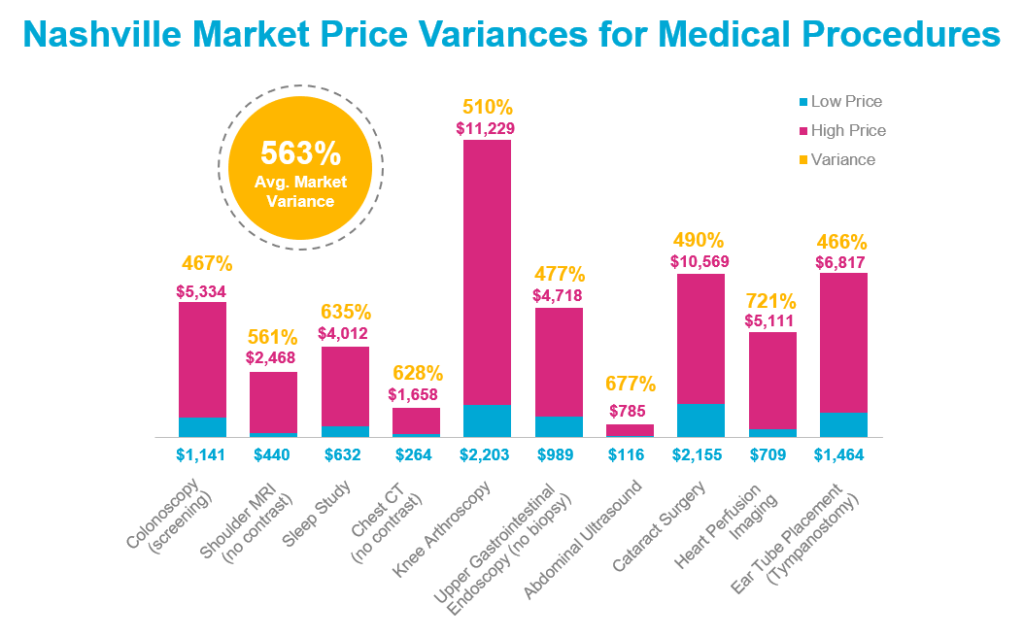How To Be a Better Healthcare Consumer
It’s no secret that healthcare has become a tangled web that’s almost unnavigable for consumers. Shopping for healthcare is vastly different than shopping for most other services: Prices are hidden, it’s difficult to find information on what you’re purchasing, and in an emergency, consumers may not have the luxury of shopping around.
On top of that, most healthcare providers and facilities are paid based on the number of people they see and the procedures they perform, otherwise known as a fee-for-service model. Unfortunately, this model creates a problem where providers and facilities aren’t incentivized to help you get healthier. This misalignment not only decreases the care experience but over time it has led to higher healthcare costs and steady declines in quality of care.

Luckily, roughly 30% of healthcare services are shoppable. If you understand how the healthcare world operates, you can learn how to find the best value for your dollar and potentially save yourself thousands!
Strategy 1 – Start with Primary Care
Healthcare providers and facilities vary greatly in quality and cost. One of the most difficult things to do as a consumer is matching up the right provider with the right facility. High-quality, low-cost providers might not always practice at facilities that meet the same quality and cost standards and vice versa.
For most people, the best place to start is with your primary care provider. These providers are trained and licensed to treat a wide variety of conditions, and a primary care setting is almost always the most cost-effective place to receive treatment. Having a relationship with a primary care provider also helps prevent health issues and could keep you from needing more expensive specialty care in the first place!
Finally, your primary care provider is a great resource for referrals to high-quality, low-cost specialty care when necessary. Your provider may be able to help coordinate your care and make the entire process easier than going it on your own.
Keep in mind that more than 80 percent of healthcare costs occur outside of the primary care setting. By starting with primary care, you may be able to avoid some of those costs.
Strategy 2 – Ask Questions
If you’ve started with your primary care provider, and you both agree specialty care is needed, it is time to ask some tough questions.
Because so much variance exists in quality across providers and facilities, it is extremely important to be informed. It might be daunting or difficult to ask questions, but you want to be confident that you understand and agree with your treatment plan. Don’t be polite! Ask hard questions! Here are some key questions to remember:
- To your referring provider
- What do I need?
- Why do you recommend that specialist/facility?
- Have other patients had good experiences?
- What should it cost?
- How is quality measured for this condition/procedure? How does that specialty/facility do in terms of quality?
- To the specialist
- Why do you recommend this treatment/procedure?
- Are there less invasive treatment options available?
- How many times have you performed this procedure/operation?
- How much will it cost?
- Where will you perform this procedure?
- To your carrier/insurance
- Is this provider in-network?
Strategy 3 – Trust but Verify
You most likely wouldn’t buy a house or a car sight unseen, so why do the same for your healthcare? It will only benefit you further to do research and shed light on all the details.
Call your insurance to verify who is in-network and who isn’t, and to access quality data if available. Get a quote from the facility and provider who will care for you. Consider a second opinion. Keep in mind: while it may take time to do extensive research, it can help save you thousands of dollars!
Healthcare no longer behaves like a free market, which means that prices continue to rise in the absence of competition. When you seek specialty care, quality and cost can vary drastically depending on where the procedure takes place. The biggest driver of cost is the facility. If you need a procedure, a quick way to save is often to schedule it on the day your preferred provider is at a low-cost facility in your area.
Strategy 4 – Be Flexible
Now that you’ve done your research, don’t be afraid to step outside of your comfort zone in order to achieve your goal! Be willing to see other providers, seek care on a different day or drive across town. Convenience is important but it shouldn’t always be your top priority. You may need to sacrifice convenience in order to get the care you need at a price that your wallet will appreciate. Just remember: in the long-run, it’s worth it!
It’s clear that lower quality care and higher costs lead to extremely unfavorable outcomes for patients. Decreased quality can lead to health complications, unnecessary tests and misdiagnoses. Meanwhile, unreasonable while costs can threaten patients’ economic wellbeing.
When you’re looking to shop smarter for your healthcare, always remember to start with primary care, ask questions, research, and be flexible. Don’t settle, don’t compromise, and don’t give up! The world of healthcare can be a towering goliath that seems insurmountable, but when we peel back the layers and use the knowledge we’ve gained, we can apply it to get the care we deserve at a price we can afford.
Premise Health is committed to helping our clients and members access high-quality, affordable healthcare that offers a great experience – both through our providers and in the community. Contact us to learn more about our approach.
Next on industry insights.

From Eligible to Engaged: Connecting Your Employees with their Primary Care
Read the Blog
Designing Advanced Primary Care Benefits: A Primer for Payers
Read the Blog